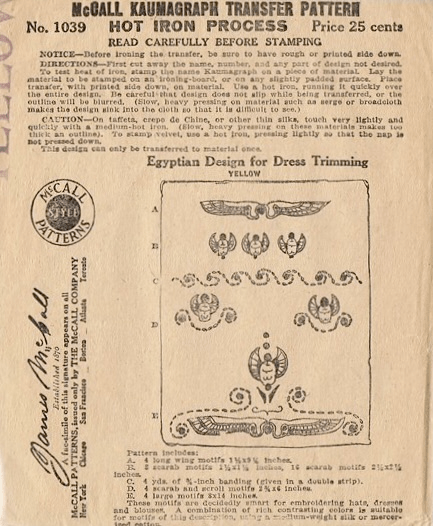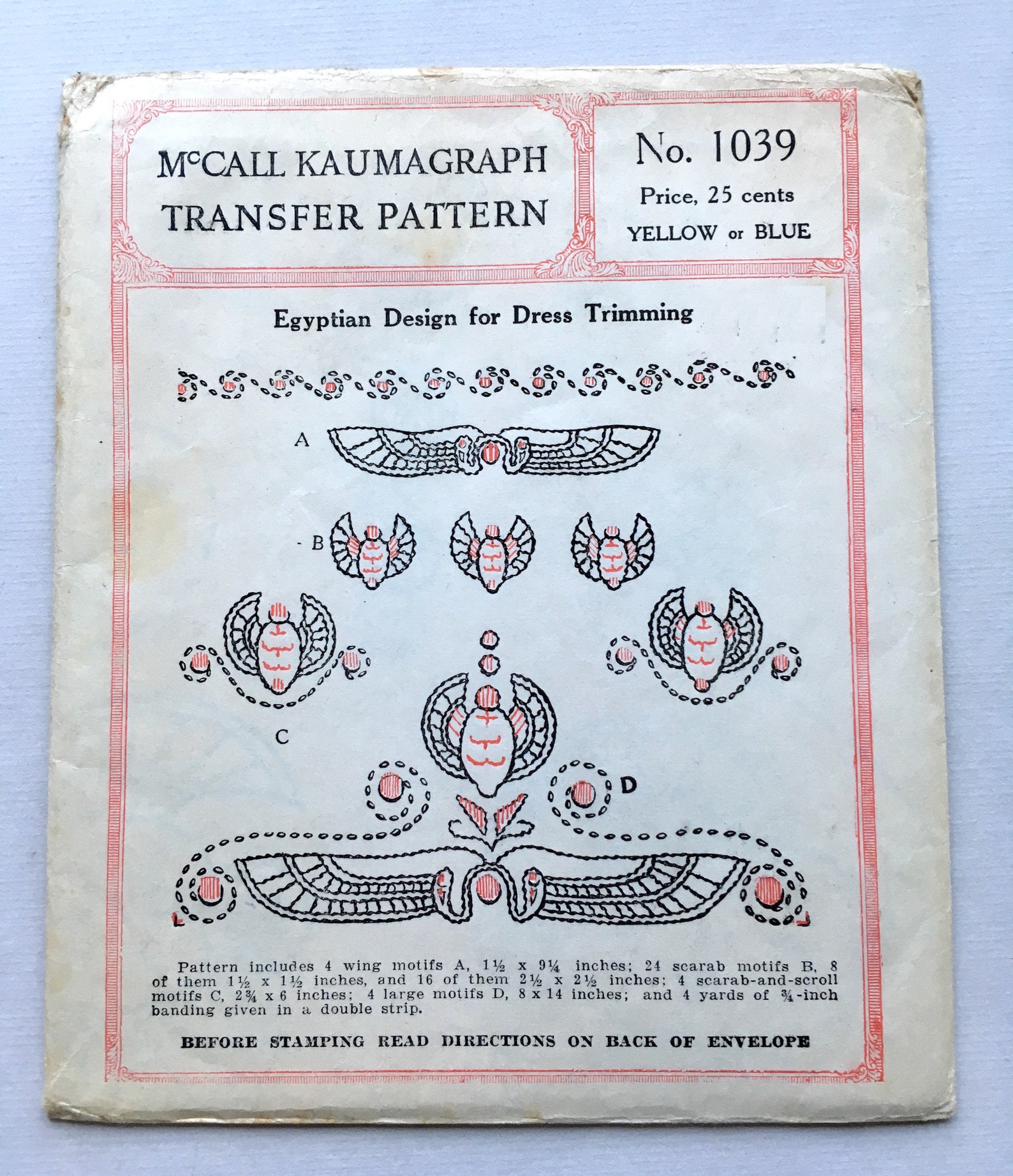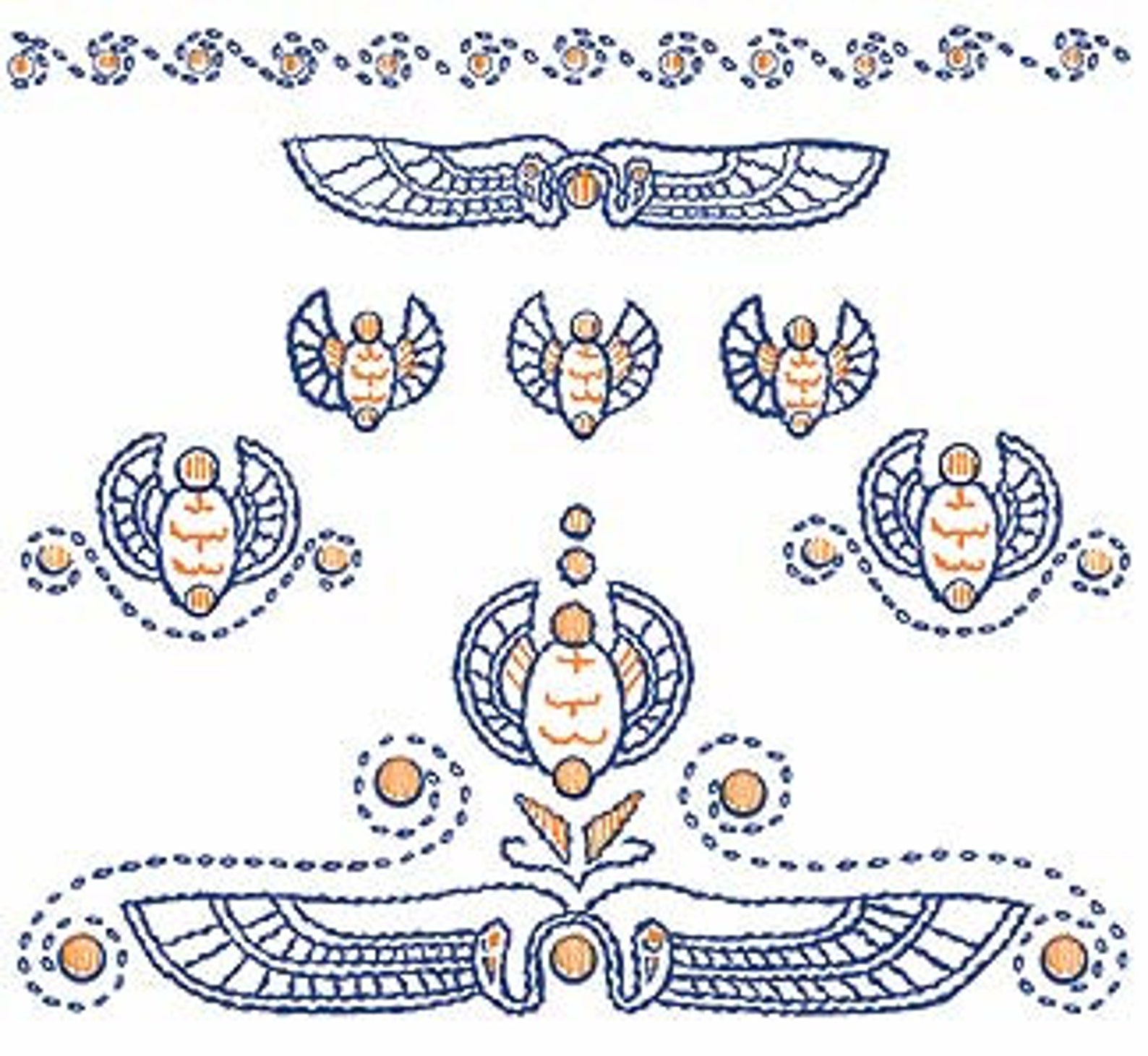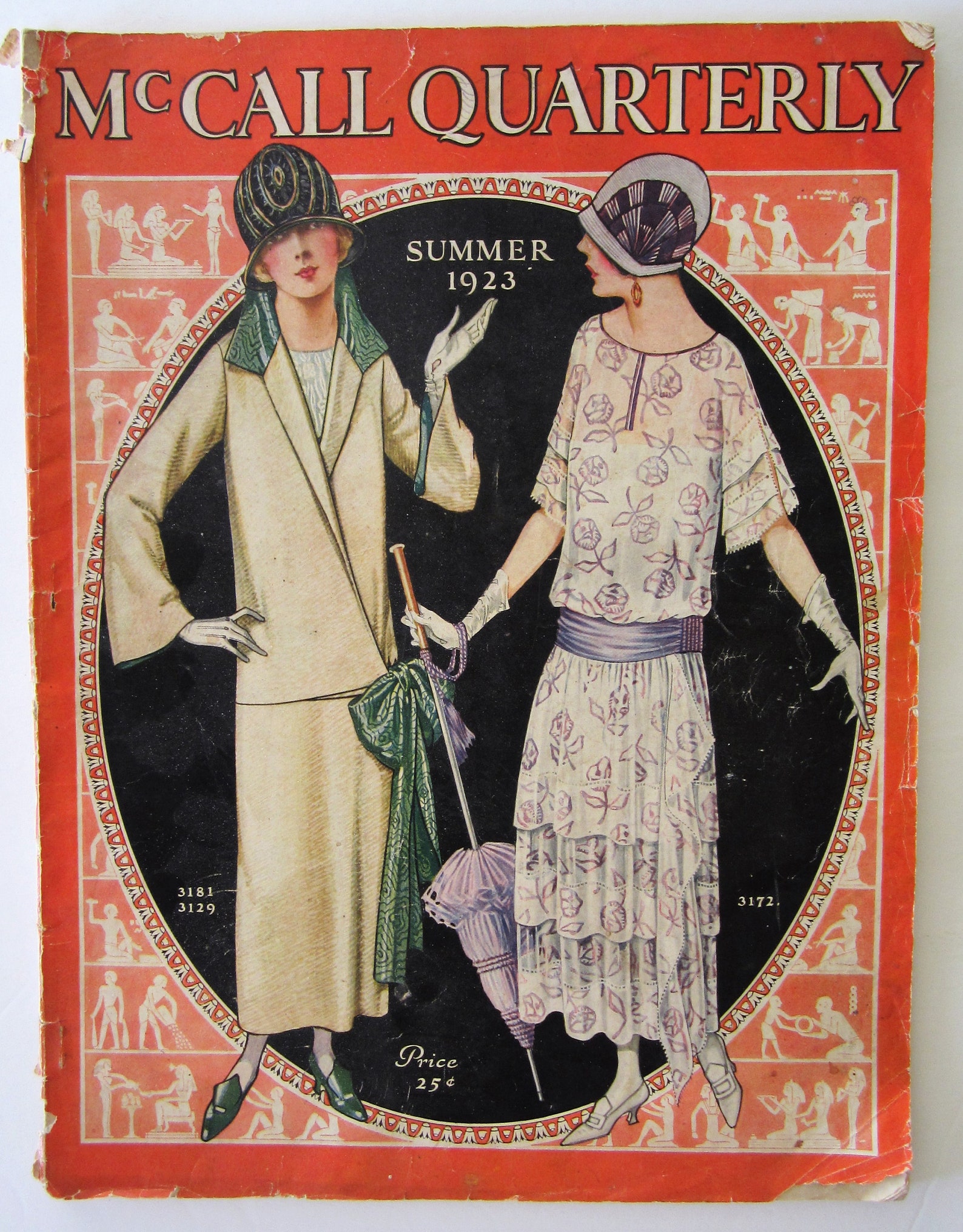
Farewell to the legendary Mary Quant, a true fashion revolutionary. The influential British designer and lifestyle brand pioneer died earlier this month, at the age of 93.
Read the designer’s Vogue obituary. (New York Times obituary)
Fashion history through DIY culture

Farewell to the legendary Mary Quant, a true fashion revolutionary. The influential British designer and lifestyle brand pioneer died earlier this month, at the age of 93.
Read the designer’s Vogue obituary. (New York Times obituary)

The tomb of Tutankhamun was rediscovered in November, 1922, making 2022 the centennial of all things King Tut. Yet as an early McCall transfer pattern shows, Neo-Egyptomania was already underway:


“Egyptian Design for Dress Trimming” (McCall 1039) dates to spring 1920, but was still being advertised three years later, explicitly referencing the King Tut trend.
Update: This design was in fact reissued in 1923 in the company’s new format. A note on the back reads, “These motifs are decidedly smart for embroidering dresses, blouses, panels of skirts, pockets, belts, hats, etc. The Egyptian colorings of royal blue, henna, green, gold and silver are the leading style.”

In summer 1923, Anne Rittenhouse wrote, “Ancient Rome as well as ancient India supplies inspiration for the figurations you should put on your clothes. The famous mosaic design found on marble tables and on floors in Italy has crept upward to our gowns. Straight bands of it are used in what is known as spinal decoration, also for skirt hems and sleeves. If you do not like to omit Egyptian embroidery, which appears to be the Twentieth Amendment to the Fashion Constitution, use the lotus flower rather than Tut’s guardians of the tomb…” (“Embroidery Everywhere,” McCall News, Aug. 1923)


Contemporary fans of Egyptian embellishment can find a reproduction of the 1920s transfer on Etsy. Happy New Year!
With thanks to Susan Ward.


